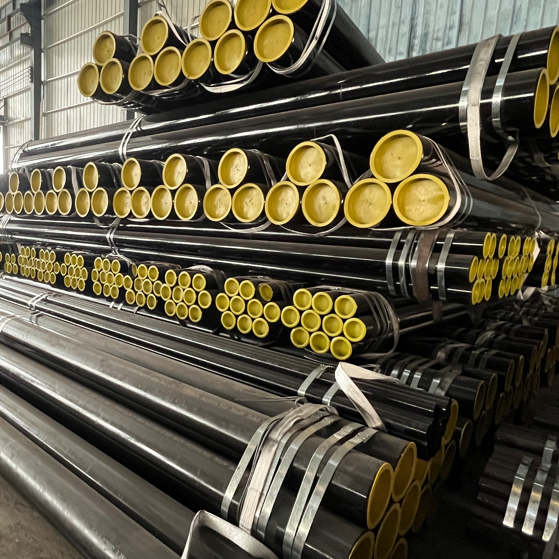ASTM A335 P11 alloy seamless steel pipe is used in nuclear power plants, power plants, high-pressure and high-temperature pipelines, and high-pressure boiler equipment.
The uses of alloy steel pipes are:
Used for heating surface pipes of low and medium pressure boilers (working pressure is generally not greater than 5.88Mpa, working temperature is below 450°C).
Used for heating surface pipes, economizers, superheaters, reheaters, petrochemical industry pipes, etc. of high-pressure boilers (working pressure is generally above 9.8Mpa, working temperature is between 450°C and 650°C).
The alloy steel pipes produced in my country are of excellent quality.
my country is the world's largest producer and consumer of alloy steel pipes. In 2020, my country's alloy steel pipe output accounted for 66.82% of the global market share.
The advantages of ASTM A335 P11 alloy steel pipe are as follows:
①Good corrosion resistance: Alloy steel pipes have excellent corrosion resistance. The thin and reinforced oxide film on the surface of alloy steel pipes makes the corrosion control level of stainless steel exceed IP68 in all qualities. It can ensure the cleanliness of the quality even if it is used underground. .
②High mechanical strength: The yield strength of alloy steel pipes is more than twice that of ordinary low carbon pipes.
③Long service life: 304L is 3 times longer than ordinary carbon steel plates.
④Good wear resistance: Its wear resistance is more than 7 times that of manganese steel.
⑤Not easy to scale.
⑥Resistant to high temperature oxidation.
⑦The glass degree after external polishing is extremely high.
⑧Good welding performance.
⑨Recyclable.
⑩ Stainless steel plate products of different sizes can be customized according to customer requirements.
ASTM A335 P11 alloy steel pipe is widely used and its shape can be seen in many industrial fields, such as automobiles, light industry, construction, machinery, petroleum, chemical industry, electric power, coal, ships, railways, etc.
 Why should Seamless steel pipes be epoxy powder coated?
Why should Seamless steel pipes be epoxy powder coated?
 ASTM A106 Thick-walled steel pipe production steps
ASTM A106 Thick-walled steel pipe production steps
 Shengtian Group successfully participated in the Russian Oil and Gas Exhibition
Shengtian Group successfully participated in the Russian Oil and Gas Exhibition
 Is API 5L Black Steel Pipe Good For Air Lines?
Is API 5L Black Steel Pipe Good For Air Lines?